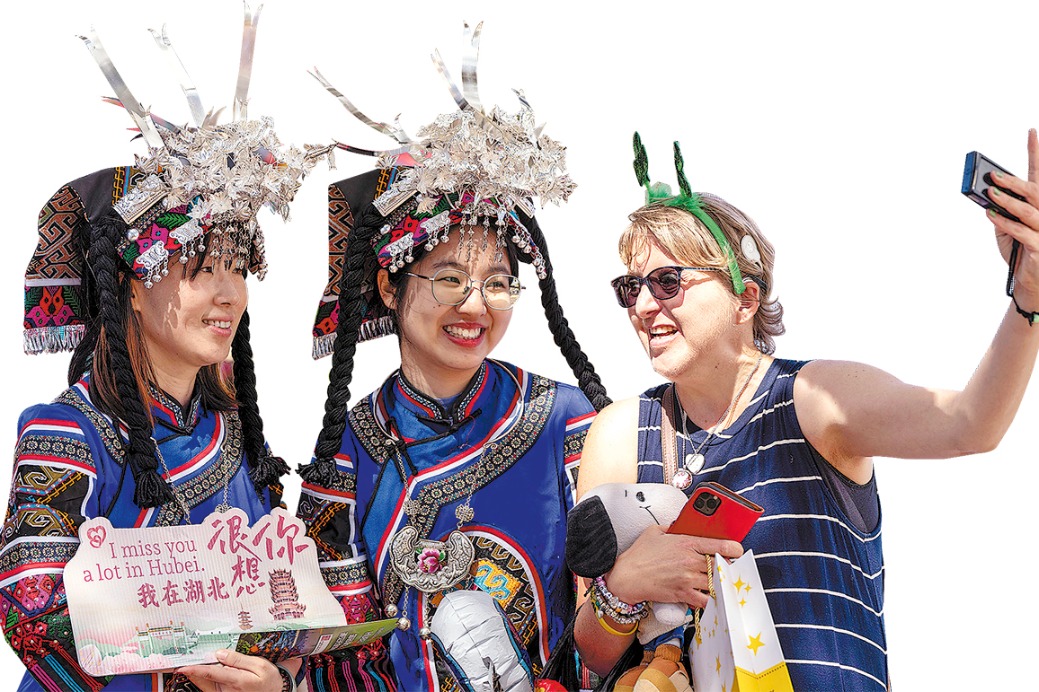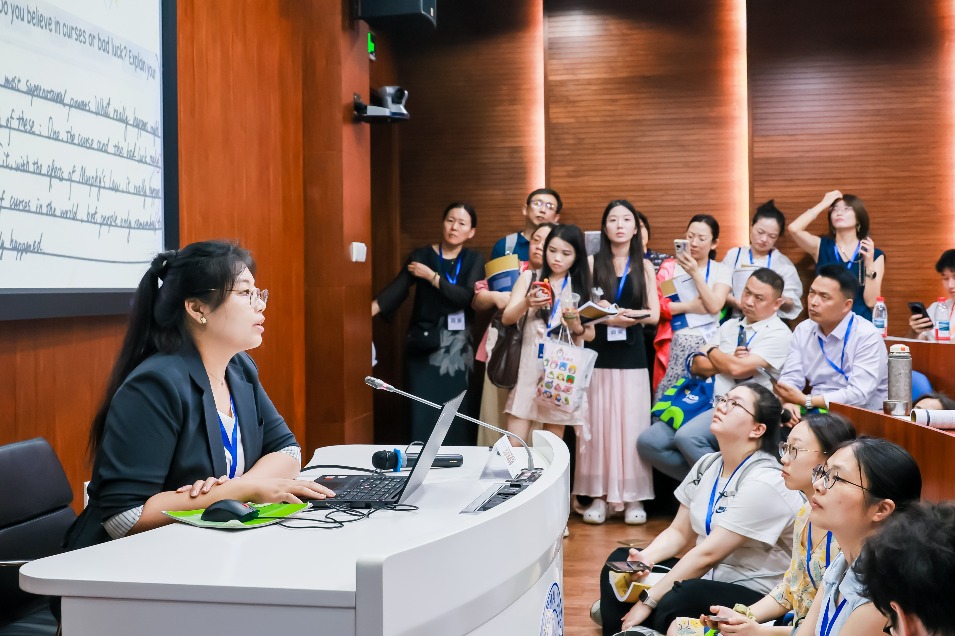Cutting edge of tradition
Craftsman keeps skills and knowledge of paper art alive, Wang Qian reports.

Using a pencil, a pair of scissors and a scalpel, Ye Kaiyuan turns a piece of paper into exquisite cutouts to express his understanding of life and the universe.
Staying true to the essence of the ancient art form-jianzhi (paper-cutting)-his artworks explore elements from traditional Chinese literature, icons and imagery from Eastern culture and capture the timelessness of the practice.
"With a piece of paper, I can create an artwork that has the power to make the world quiet or excited. It is the charm of art, which triggers people to think," the 38-year-old artist says.
Inspired by traditional shanshui (landscape) painting, one of Ye's latest creations is Across the Water, a 1.2-meter-long and 0.4-meter-wide work, featuring mountains and rivers. In the artwork with fine lines, a poetic scene is featured where a man stands on a boat in still water while clouds pass by mountains. In Ye's own interpretation, the piece indicates that "with home always there, people should bravely explore the outside world".
For the artist, the inspiration behind his art is his own experiences about joys and sorrows, departures and reunions, and struggles and triumphs.
Paper-cutting is a folk art originating in China, where paper was invented during the Han Dynasty (206 BC-AD 220).Ye has brought the ancient craft back to life, with his intricate designs while interweaving a contemporary narrative of poetry and philosophy.
"I am the fortunate one to find paper-cutting. Through the craft, I find an artistic way to express my understanding about the world and life," the artist says, adding that paper-cutting is like "doing subtraction with paper", removing the redundant parts and making elaborate designs.
It is similar to life, in which people need to get rid of unrest, arrogance and vanity and stay true to themselves, Ye says.
His works have been on display at exhibitions and galleries in China and abroad. One of his artworks sold for a whopping 150,000 yuan ($22,400). In 2015, China Post issued a set of commemorative stamps themed on his paper-cut pieces.
Yao Yingjia, chief designer of Chinese technology company Lenovo Group, says he is amazed by Ye's skills and touched by the stories behind the artworks, through which Yao sees the "endless possibilities for the traditional craft".
Waiting process
Born in Zhangpu county, Fujian province, which is known as the "hometown of paper-cutting art", Ye got interested in the craft when he was a boy. Collecting cigarette boxes and tea packages as material, he had most of his childhood memories connected with paper-cutting.
In 1999, then in junior middle school, he won second place in a national competition for calligraphy and painting. In 2000, he won gold medal at a folk art competition held in Nanjing, Jiangsu province.
Knowing his talent in art and facing financial pressure at school, Ye applied for an advertisement designer's job in Xiamen, Fujian, after finishing junior middle school at the age of 16. He then changed jobs on three occasions, from designer, hotel waiter to tea dealer. However, he never stopped making paper-cut designs. From 1999 to 2011, his artworks won awards at events across the country.
In late 2011, he quit his last job as a tea dealer, which had an annual income of more than 300,000 yuan. It was a decision that most people, including his farmer parents, could not understand, when few people joined paper art as a profession.
"Society tends to judge whether a job is good or not by the money it makes," Ye says. "But I think life is only fulfilling if you do something you like and enjoy.… I kept changing jobs, but none of them made me happy and I didn't know why I got so busy making a living. To get rid of the meaningless life, I had to find its meaning, and to me, it's through paper-cutting," Ye says.
In his 7-square-meter room, he created Wait in March 2012, which he describes as one of his best paper-cut pieces.
It is a 1.2-meter-long and 1.2-meter-wide work, featuring a bird resting quietly on the branch of a blossoming tree. The bird is like himself, waiting for a bright tomorrow, Ye says.
"It reflects my mood at that time, when I quit my job and faced uncertainty about the future. Although the waiting process was painful, it was hopeful," he adds.
In 2012, he established the Yile Paper-Cutting Art workshop in Xiamen and within half a year, he created dozens of pieces. That summer, he spent tens of thousands of yuan to hold his first exhibition to let his art to be seen by more people. However, the exhibition did not welcome many visitors, with only one piece sold for 328 yuan.
"When the exhibition was over and I packed my works at midnight, a framed piece fell to the ground and shattered. There was a moment when I thought about giving up, but I believed in the value of my craft," he says.
Breaking boundaries
When talking about the traditional craft of paper-cutting, interior decors sticking to windows and doors would come to most people's mind. The paper creations were intended to honor gods and ancestors and later evolved into a leisure activity for women and children across the country.
In 2009, Zhangpu paper-cutting was added to UNESCO's list of intangible cultural heritage of humanity as a part of Chinese paper-cutting tradition. The Zhangpu style is monochromatic and emphasizes proportional composition, smooth lines and a graceful style. To elevate the style beyond its traditional origins, Ye spent more than 10 years to find the balance between the craft and contemporary life.
Different from the traditional approach to the craft in which the drawing is done first and then the cutting, Ye splashes black, red or yellow ink on rice paper first, then draws elaborate designs and finally cuts and engraves the paper creation.
"This means you will never know what the final outcome will be, which colors will be left and which will not. The unpredictability is the most interesting part, and I think being natural is beautiful," he says.
The creative process is usually slow. It took Ye at least two weeks to draw and make a paper-cut work based on Farewell My Concubine, a classic Peking Opera featuring the love story of Xiang Yu, a warlord in the late Qin Dynasty (221-206 BC), and his concubine Yu Ji. Ye did not cut two of the characters in his creation; instead, he used flowers and curves to represent the heroine of the story.
To let more people know and appreciate the beauty of the folk art, Ye also set up a paper-cutting gallery in Xiamen in 2015. He has worked with global companies, covering sectors such as hotels, tea brands, restaurants and architecture. In March, his four paper creations were sold on Yuanqi platform for non-fungible tokens as art trade.
"I want to extend the boundaries of paper-cutting to everyday life, letting more people get to know the craft," Ye says.
Hu Meidong contributed to the story.
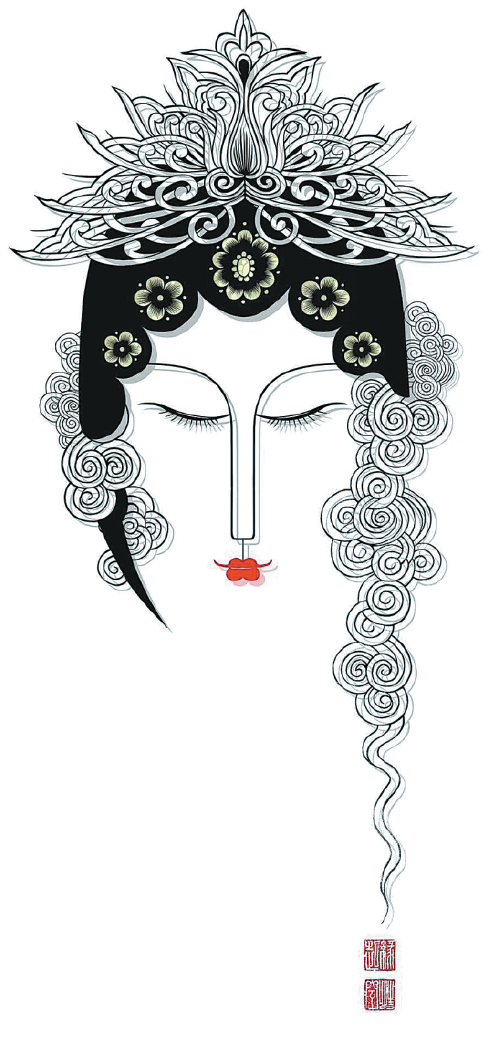

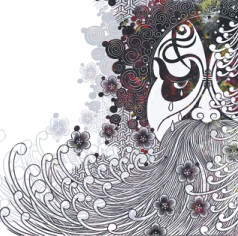
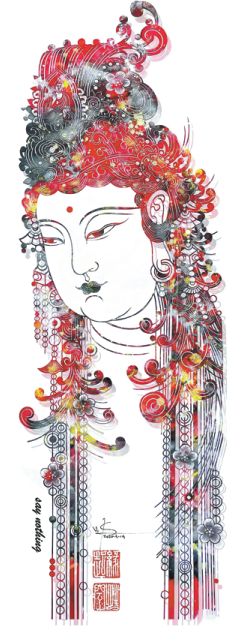
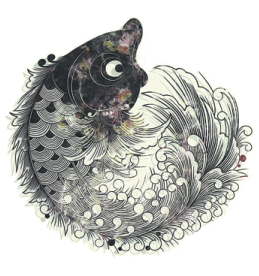
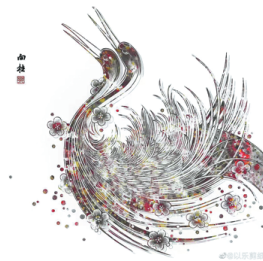


Today's Top News
- Xi's book on governance hailed for insights into 'China miracle'
- European destinations swamped by tourists
- Economy expected to maintain steady pace
- Stable, healthy Sino-US ties benefit all
- CPC plenum to focus on next five-year plan
- Talks highlight the fact that cooperation benefits both sides, confrontation harms both
















